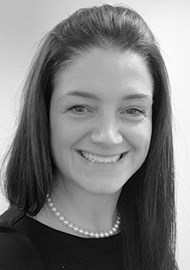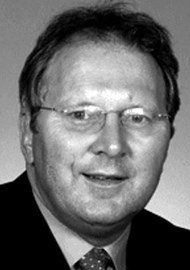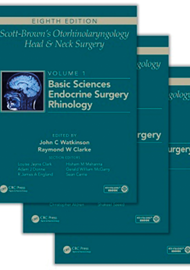If there’s one thing I love about a book review, it’s the unique opportunity to handle, peruse and imbibe a piece of work before it reaches the masses. There are few things more enjoyable than engaging with printer-fresh pages and carefully chosen words, knowing that they represent the love, investment, and hard graft of the authors and editors. Imagine a really good coffee, or a breezy autumn walk: new books rank alongside these moments, for me.
The 8th edition of Scott-Brown had not yet been published when I was asked to review it. I would see only electronic proofs. So, no glossy pages. No fresh inky smell. No delicious creak as I open the hardback cover for the first time to run my finger down the dates of the previous editions (which I own, in their beautiful completeness). But it’s Scott-Brown ! Who would turn down such an opportunity for a preview, albeit an electronic one?
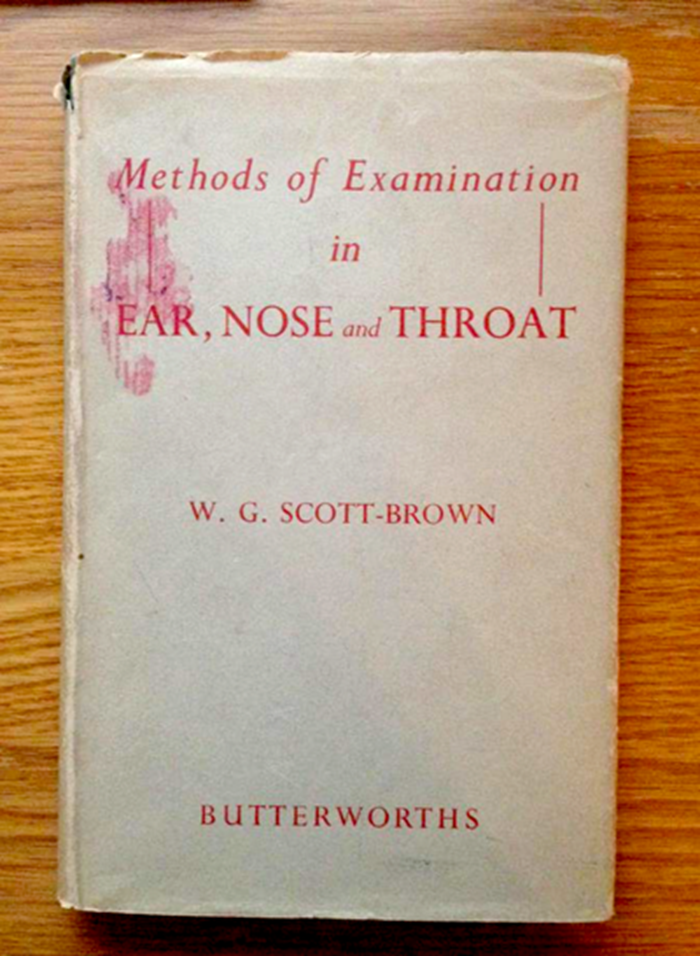
Figure 1. Emma Stapleton’s copy of WG Scott-Brown’s other otorhinolaryngology textbook, Methods of Examination in Ear, Nose and Throat (1954).
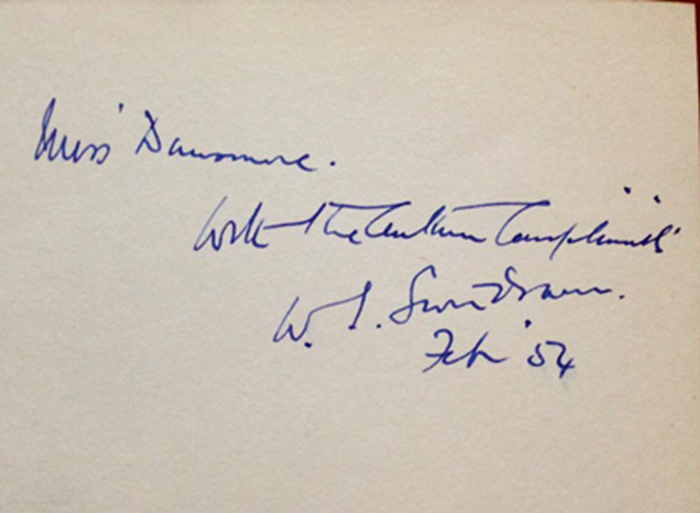
Figure 2. The author’s dedication.
First published in 1952, Scott-Brown’s Otorhinolaryngology Head and Neck Surgery has a rich history, and a sparkling reputation. The British Medical Journal’s review of the first edition stated that the two-volume text “…will hold its leading place for many years. It will serve as a reference work for experts and should be in the hands of those reading for higher examinations.” WG Scott-Brown also authored a shorter text: Methods of Examination in Ear, Nose and Throat, published in 1954 (Figure 1). He dedicated my copy to a colleague, though I’ve never been able to decipher the nature of his compliments (Figure 2). You can learn more about the history of Scott-Brown and his work in Ray Clarke and John Watkinson’s article in the preface to the textbook.
Whilst I mention their names, I hope you’ll join me in offering the Editors in Chief of this immense project our very hearty congratulations. Scott-Brown is the epitome of printed reference for otolaryngologists. Commissioning, compiling and editing this tome must have been no mean feat. The book comes in three volumes, available for £180 each, or £495 for the set. I do wonder who would not want a full set, for completeness and cross-reference. The book will be available at a lower price to readers in countries with developing economies.
The lengthy list of contributors to the 330 chapters includes colleagues from over 20 countries, with a heavy predominance of British-based authors, in keeping with the book’s heritage. Each chapter opens with a recommendation of keywords for an online search which might offer updates to readers looking for the latest evidence. Despite having been in progress for a decade, the information within the printed book is remarkably current. I read one particular chapter with interest, looking specifically to see whether a recent advance had been mentioned. How very reassuring to find it included and referenced!
My interest in history draws me to make comparisons between this edition and the previous ones; a sentiment shared by Michael Gleeson, Editor in Chief of the 7th edition, in his preface to this 8th edition. Since 1952, there have been immense developments within our specialty. This is reflected not only in chapters which address technological advances and scientific discoveries, but also the expansion of sub-specialist areas. Endocrine surgery of the head and neck, for example, now accounts for 30 chapters. Also, the contribution of topics belonging to other specialties, but which have importance to otorhinolaryngological practice. Many of these make an appearance in the ‘Basic Science’ section of Volume 1, and it is reassuring to see that most of these chapters have been authored or co-authored by colleagues from the relevant specialty.
Working in collaboration with cross-specialty colleagues is a real privilege for otorhinolaryngologists. It is absolutely essential that we recognise the experience and expertise of colleagues in other specialties. If I had a question about genetics in my neurotology and skull base practice, I’d ask Professor Gareth Evans, a medical geneticist who has an international reputation for his clinical and academic work. I happen to see him every Wednesday, but how wonderful that his name pops up as author of the chapter on ‘Neurofibromatosis 2’. This is just one example of the book’s cross-specialty collaboration. There are physicians, scientists and audiologists amongst the contributor list whose comprehensive understanding of their own specialty is a great asset to this book for otorhinolaryngologists. This is world-class, collaborative publishing at its best.
I’ve promised to be balanced in my review, but I’ve struggled to produce a criticism of this remarkable piece of work. In fact, my only criticism is more a reflection on my own reasons for picking up a textbook. When I first ran my eyes over the list of contents, I was surprised (and I’ll confess, a little disappointed) to see the names of trainees, fellows, and very junior consultants; to learn that world-class colleagues had delegated the authorship of such important content to junior colleagues, not always with a supervising author. But perhaps I was wrong to be disappointed, as these are solid, evidence-based summaries of clinical topics. On this note, they cannot be faulted. The chapters written by true world leaders, however, are richly crafted from years of experience, expertise, and an ability to interpret evidence at a level which fresh young authors lack. I’m a sucker for grey-haired wisdom, whereas most readers will open a textbook searching for a simple, factual answer to fill a self-identified gap in their knowledge. This book achieves the latter in exemplar.
I must concede, therefore, that I have no criticism of this masterpiece. It achieves its laudable aim of covering the entire specialty in three affordable volumes. It is inclusive of valuable wisdom from our sibling specialties. It is up-to-date, and each chapter offers suggestions for online searches for newer evidence. It is replete with the wisdom of established international experts, yet it also looks to the future of our fascinating specialty. It would suffice as a sole text for higher examination preparation and will be an essential addition to the shelves of every medical library.

